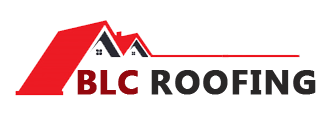Roofs are the unsung heroes of our homes, providing shelter, safety, and aesthetic appeal. However, a silent adversary often lurks in the shadows, threatening the integrity of our roofs: mold. Understanding the dangers of mold and how to prevent and treat it is essential for every homeowner.
Contents [hide]
Identifying Mold on Your Roof
Mold, along with its close relatives algae, moss, and mildew, thrives in humid environments or areas with poor drainage. While some of these organisms are harmless, mold can be detrimental to both your home’s structure and your health.
Differentiating Between Algae, Moss, Mildew, and Mold
- Algae: Recognizable by its green or black-green hue, algae can appear as a surface stain and feels slick.
- Moss: This benign organism has a distinctive bright green color and a fuzzy appearance.
- Mildew: Often light gray-green, mildew is a fast-spreading organism that thrives in warm, wet climates.
- Mold: Dark splotches on surfaces, especially moist wood or drywall, indicate the presence of mold. It’s not only unsightly but can also emit a foul odor.
Warning Signs of Mold
- Odor: Persistent musty smells, especially from attic spaces, can signal mold growth.
- Health Issues: Mold can exacerbate respiratory problems, cause skin rashes, and lead to other health concerns.
- Visual Indicators: Discoloration along ceiling-wall joints or peeling paint around windows can be signs of mold.
Preventing Mold Growth on Your Roof
Prevention is the best defense against mold. Here are some proactive measures:
Proper Tree Maintenance
Ensure that tree branches are trimmed at least three feet away from your roof. This prevents shading that can trap moisture, a prime environment for mold.
Clean Gutters Regularly
Gutters clogged with debris can trap water on the roof, creating a breeding ground for mold. Regular cleaning ensures proper drainage.
Install Ridge Vents
These vents, situated at the peak of sloped roofs, allow warm, moist air to escape, reducing the chances of mold growth.
Use Advanced Roofing Materials
Modern roofing materials often come with water-repellent properties or treatments that prevent mold growth.
Treating Mold on Your Roof
If mold does appear, early intervention is crucial.
Bleach Solution
A mixture of bleach and water can effectively kill mold. Spray it on the affected area, let it sit, then rinse with a hose.
Copper or Zinc Strips
Installing these metal strips can prevent algae growth, a precursor to mold.
Vinegar Solutions
While effective against moss and algae, vinegar doesn’t kill mold. However, it can be a natural alternative for other microbial growths.
In Conclusion
The roof is more than just a protective barrier; it’s an integral part of your home’s overall health. Regular maintenance, including mold prevention and treatment, ensures its longevity. If you’re ever in doubt about the state of your roof or need professional assistance, consider reaching out to BLC Roofing, a trusted name for roof repair service in Akron OH. With their expertise in roofing services in Akron OH, you can rest assured that your roof is in good hands. Remember, early detection and intervention are key to preventing potential roofing disasters.
